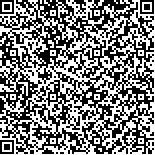本文已被:浏览 888次 下载 638次
投稿时间:2020-08-11 网络发布日期:2020-10-20
投稿时间:2020-08-11 网络发布日期:2020-10-20
中文摘要: 目的 采用回顾性研究方法通过对传统机器人心脏手术方式(使用一个腔镜机械臂、三个操作机械臂及多个专用手术器械)进行改良,仅使用两个机械臂和两把机器人专用手术器械,探讨其应用于不停跳房间隔缺损(ASD)修补术的安全性及有效性。
方法 南京医科大学第一附属医院心脏大血管外科在2016年12月至2018年9月共完成达芬奇系统下改良不停跳ASD修补术47例,经回归分析制作体外循环(CPB)时间及手术时间的学习曲线;并选取在学习曲线上达到稳定状态后2017年9月至2018年9月接受达芬奇系统下改良不停跳ASD修补术的25例患者作为改良机器人组;选择同期27例接受经胸壁3D胸腔镜下“三孔法”不停跳ASD修补术的患者作为3D胸腔镜组。两组患者均经股动静脉及颈内静脉插管建立外周血管CPB。对两组患者的围手术期情况、手术相关数据及术后随访等情况进行对比。
结果 所有患者均成功接受了手术治疗,无死亡或其他严重并发症。经回归分析并制作学习曲线,47例改良机器人达芬奇系统下不停跳ASD修补术的手术时间学习曲线为y=302-41.79 ln(x)(r2=0.904,P<0.01);CPB时间学习曲线为y=162-40.684 ln(x)(r2=0.877,P<0.01)。改良机器人组同期行三尖瓣成型12例(48.00%),3D胸腔镜组同期行三尖瓣成型11例(40.74%),两组接受三尖瓣成型术的比例相当(P>0.05)。改良机器人组CPB时间、术后呼吸机使用时间短于3D胸腔镜组,手术时间长于3D胸腔镜组(P<0.05,P<0.01)。两组患者术后ICU停留时间、术后引流量、术后住院天数等差异无统计学意义(P均>0.05)。两组患者术后3、30、90、180 d随访,二维超声心动图检查均未发现残余分流或三尖瓣反流等。
结论 改良机器人不停跳ASD修补术是一种安全有效的手术方式,经学习曲线达稳态后其手术时间及CPB时间均趋于稳定;该术式可更快的完成镜下操作,缩短CPB时间,减少患者的手术创伤,促进患者快速康复,具有良好的微创和美容效果。
Abstract:Objective To investigate the safety and feasibility of the improved robot-assisted atrial septal defect (ASD) repair under beating-heart(using two robotic arms and two special instruments for robotic surgery),through a retrospective study.
Methods From December 2016 to September 2018,47 cases of modified robot-assisted ASD repair under beating-heart were completed in the Department of Cardiovascular Surgery of First Affiliated Hospital of Nanjing Medical University.Based on the steady-state learning curve of cardiopulmonary bypass (CPB) time and operation time made by regression analysis,25 patients from September 2017 to September 2018 were selected as modified robot group;27 patients undergoing ASD repair by 3D thoracoscopy with three-ports were served as 3D thoracoscopic group in the same period.Through femoral artery,vein and internal jugular vein cannulation,extracorporeal circulation was established in both groups.The perioperative situation,operation related data and postoperative follow-up were compared between two groups.
Results ASD repair closures were successfully performed without in-hospital mortality or other serious complications in both groups.
Regression analysis and learning curve showed that in 47 cases of modified robot-assisted ASD repair under beating-heart,the learning curve for operation time was y=302-41.79 ln(x)(r2=0.904,P<0.01),and the learning curve for CPB time was y=162-40.684 ln(x)(r2=0.877,P<0.01).There were 12 cases (48.00%) of undergoing tricuspid valvuloplasty simultaneously in modified robot group and 11 cases (40.74%) in 3D thoracoscopic group(P>0.05).CPB duration and postoperative ventilator support time in modified robot group were lower than those in 3D thoracoscopic group,and the operation time was longer than that in 3D thoracoscopic group (P<0.05,P<0.01).There were no significant differences in ICU stay time,postoperative drainage volume and length of hospital stay between two groups (all P>0.05).During postoperative follow-up,no residual shunt or tricuspid regurgitation occurred.
ConclusionsModified robot-assisted ASD repair under beating-heart is a safe and effective surgical method,and the operation time and CPB time tend to be stable after the learning curve reaches a steady state.The mothed has advantages in speeding up the completion of microsurgery,shortening the CPB time,reducing the surgical trauma and promoting the rapid recovery of patients with good minimally invasive and cosmetic effects.
keywords: Da Vinci robot-assisted surgical system Atrial septal defect Congenital heart disease Learning curve
文章编号: 中图分类号: 文献标志码:A
基金项目:南京市科技局项目(20175002)
附件
引用文本:
唐义虎,吴延虎,周景昕,朱锦富,刘翔,李明科,戴亚伟.达芬奇系统下改良不停跳房间隔缺损修补及学习曲线的临床研究[J].中国临床研究,2020,33(10):1314-1319.
唐义虎,吴延虎,周景昕,朱锦富,刘翔,李明科,戴亚伟.达芬奇系统下改良不停跳房间隔缺损修补及学习曲线的临床研究[J].中国临床研究,2020,33(10):1314-1319.
